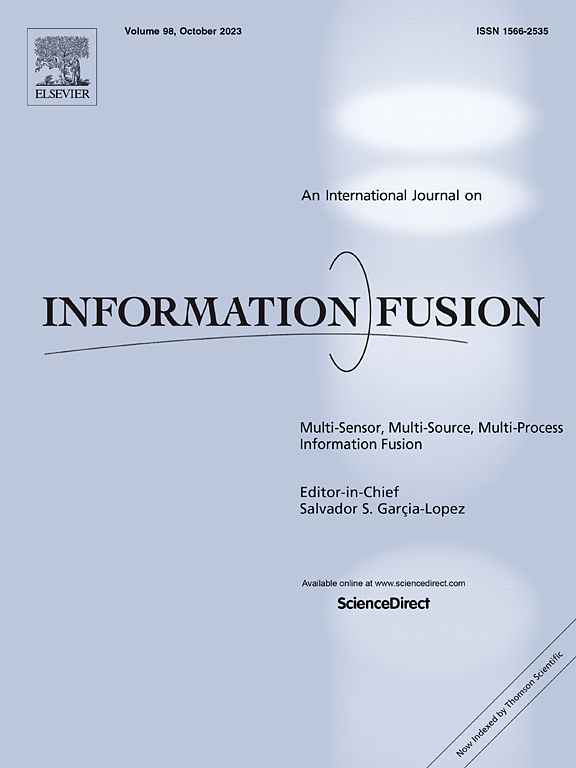Efficiently Integrate Large Language Models with Visual Perception: A Survey from the Training Paradigm Perspective
IF 14.7
1区 计算机科学
Q1 COMPUTER SCIENCE, ARTIFICIAL INTELLIGENCE
引用次数: 0
Abstract
Integrating Large Language Models (LLMs) with visual modalities has become a central focus in multimodal AI. However, the high computational cost associated with Vision Large Language Models (VLLMs) limits their accessibility, restricting broader use across research communities and real-world deployments. Based on a comprehensive review of 36 high-quality image-text VLLMs, this survey categorizes vision integration into three training paradigms, each employing distinct approaches to improve parameter efficiency. Single-stage Tuning combines pretraining with few-shot learning and achieves strong generalization using minimal labeled data by training only the Modality Integrator (MI). Two-stage Tuning enhances performance through instruction tuning, multi-task learning, or reinforcement learning while improving efficiency via selective MI training, reparameterization modules, and lightweight LLMs. Direct Adaptation skips pretraining and directly finetunes the model on vision-language tasks, achieving efficiency by embedding lightweight MIs into frozen LLMs. These training paradigms have enabled practical applications in areas such as visual assistance, mobile device deployment, medical analysis, agricultural monitoring, and autonomous driving under resource constraints. Despite these advances, each paradigm faces distinct limitations: Single-stage Tuning struggles with few-shot transfer, Two-stage Tuning remains computationally expensive, and Direct Adaptation shows limited generalization ability. Correspondingly, future progress will require more effective pretraining strategies for better few-shot transfer in Single-stage Tuning, optimized use of lightweight LLMs in Two-stage Tuning, and broader adoption of instruction tuning in Direct Adaptation to improve generalization under resource constraints.

大语言模型与视觉感知的有效整合:训练范式视角的研究
将大型语言模型(llm)与视觉模态集成已经成为多模态人工智能研究的焦点。然而,与视觉大型语言模型(vllm)相关的高计算成本限制了它们的可访问性,限制了在研究社区和实际部署中的更广泛使用。基于对36个高质量图像-文本vllm的全面回顾,本研究将视觉整合分为三种训练范式,每种范式采用不同的方法来提高参数效率。单阶段调谐将预训练与少次学习相结合,通过只训练模态积分器(MI)实现了使用最小标记数据的强泛化。两阶段调优通过指令调优、多任务学习或强化学习来提高性能,同时通过选择性MI训练、重新参数化模块和轻量级llm来提高效率。直接适应跳过预训练,直接对视觉语言任务的模型进行微调,通过将轻量级mi嵌入到冻结的llm中来实现效率。这些培训范例已经在视觉辅助、移动设备部署、医疗分析、农业监测和资源限制下的自动驾驶等领域实现了实际应用。尽管取得了这些进步,但每种范式都面临着明显的局限性:单阶段调优与很少的镜头转移斗争,两阶段调优仍然在计算上昂贵,直接自适应显示有限的泛化能力。相应地,未来的进展将需要更有效的预训练策略来实现单阶段调优中更好的少镜头迁移,优化两阶段调优中轻量级llm的使用,以及在Direct Adaptation中更广泛地采用指令调优来提高资源约束下的泛化。
本文章由计算机程序翻译,如有差异,请以英文原文为准。
求助全文
约1分钟内获得全文
求助全文
来源期刊

Information Fusion
工程技术-计算机:理论方法
CiteScore
33.20
自引率
4.30%
发文量
161
审稿时长
7.9 months
期刊介绍:
Information Fusion serves as a central platform for showcasing advancements in multi-sensor, multi-source, multi-process information fusion, fostering collaboration among diverse disciplines driving its progress. It is the leading outlet for sharing research and development in this field, focusing on architectures, algorithms, and applications. Papers dealing with fundamental theoretical analyses as well as those demonstrating their application to real-world problems will be welcome.
 求助内容:
求助内容: 应助结果提醒方式:
应助结果提醒方式:


